Jo Nakashima Traditional Origami Frog Diagram
Fullscreen View
The author recommends viewing the raindrop in fullsceen.
Click here to go fullscreen.
×
1
Krishna Panyam
Introduction to Origami
ori = folding; kami = paper
Earliest reference to paper folding was a mention of a traditional butterfly design in a poem written by Ihara Saikakau in 1680.

Bowl from a copper sheet (Goran Konjevod), Life is Beautiful, an installation consisting of 420 cubes and 7 Fireworks (Yami Yamauchi)
2
Krishna Panyam
Origami is the traditional art of paper folding. It originated in Japan many centuries ago and is now well known all over the world.



Traditional models: Crane, Masu Box, Boat, Lily, Jumping Frog, Good Luck Star.
3
Krishna Panyam
Using the techniques of Origami, a simple flat sheet of paper can be turned into almost anything from a paper airplane or boat, to a flower vase or a pram!
The fascinating thing about Origami is that the transformation of the paper into the final model consists of only folding and nothing else, without requiring any specialized tools. Thus Origami symbolizes the Japanese traits of purity and simplicity.
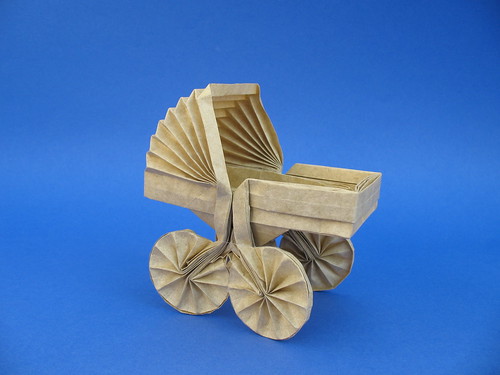
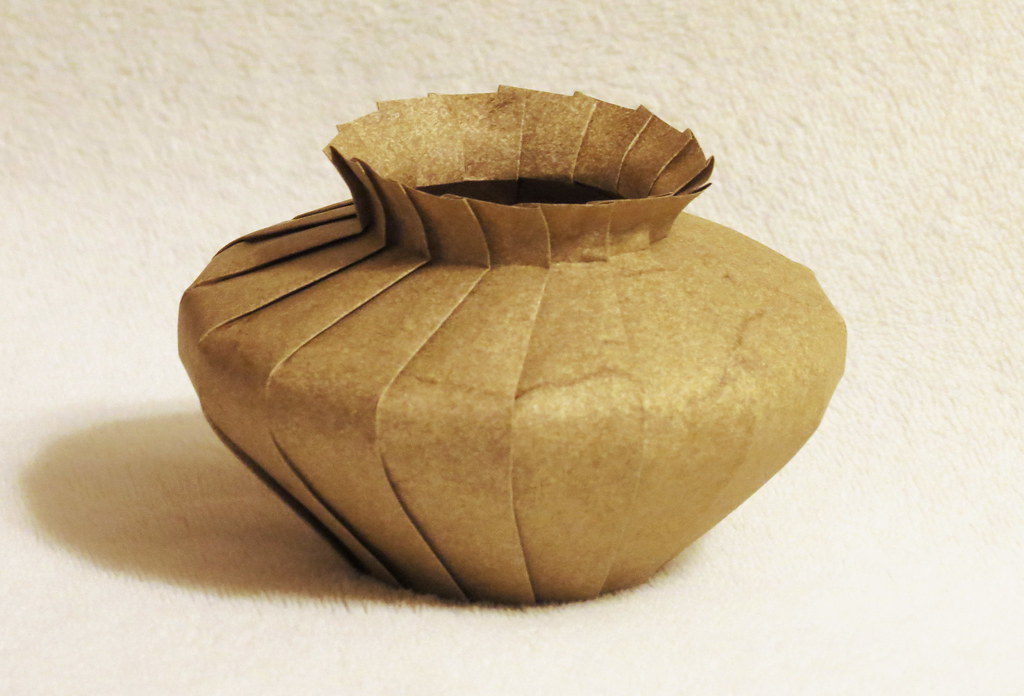
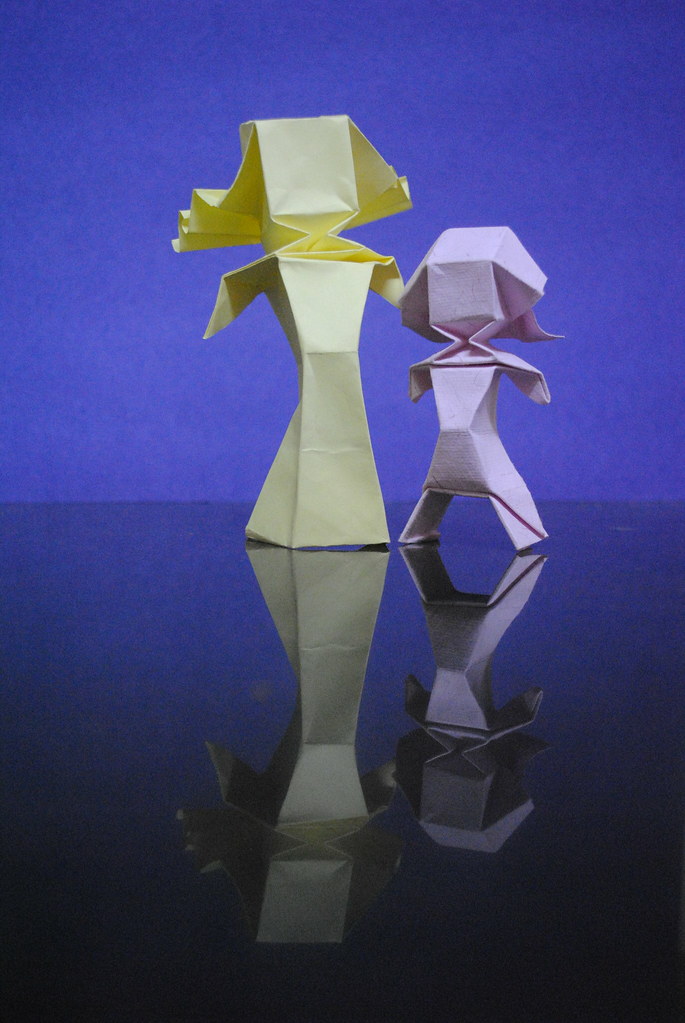

L-R: Pram (Roberto Gretter), Pleated Form (Rebecca Gieseking), Bloxy (Jo Nakashima), Spring Into Action (Jeff Beynon)
4
Krishna Panyam
Mountain Fold and Valley Fold
 These are the basic operations in Origami. When you take a piece of paper, lift up a part of it and fold it along a straight line, you are creating a valley fold (when looked from above). The fold creates a V shape which is similar to a valley. The same fold is called a mountain fold when we look at it from the other side, where the fold now stands up like the ridge on a mountain.
These are the basic operations in Origami. When you take a piece of paper, lift up a part of it and fold it along a straight line, you are creating a valley fold (when looked from above). The fold creates a V shape which is similar to a valley. The same fold is called a mountain fold when we look at it from the other side, where the fold now stands up like the ridge on a mountain.
By combining these basic folds, one can create many more folds such as blintz, squash, crimp, sink, petal, rabbit ear, inside reverse, outside reverse, and so on.
Some compound folds, L to R: Inside Crimp Fold, Sink Fold, Outside Reverse Fold
5
Krishna Panyam
Modular Origami
In modular Origami, multiple units are created independently and joined to make a single model. Usually these units are all identical, but sometimes they may be mirror images. The units are held together using folding only, and not with glue or any other material.

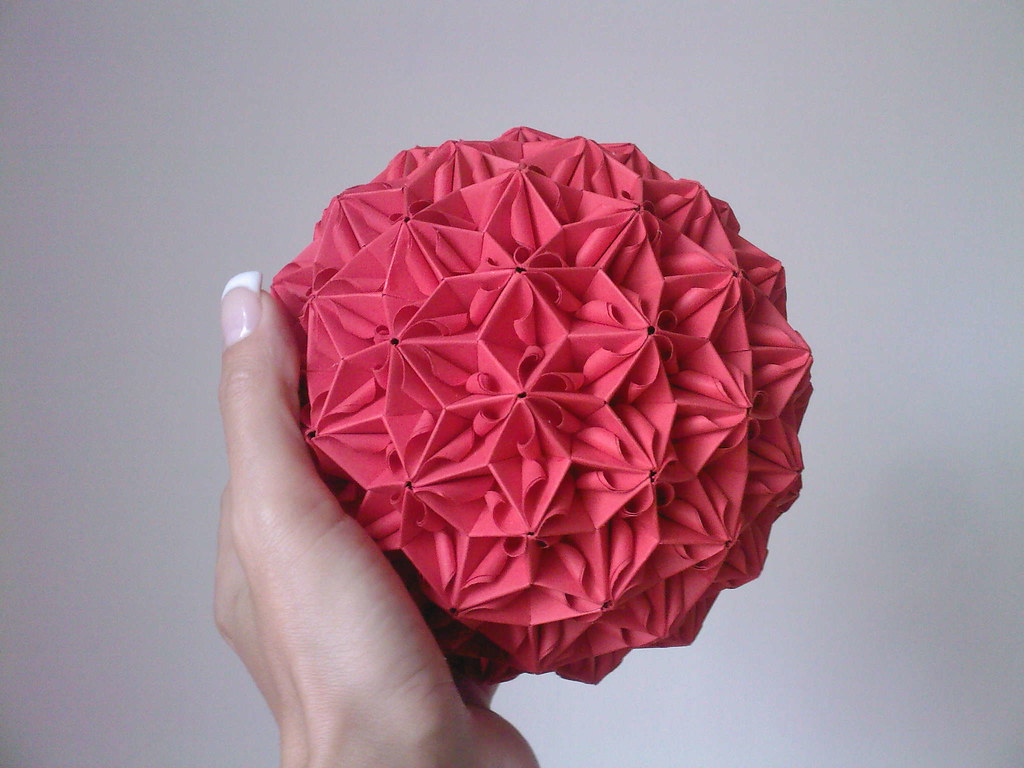
Left: Ninja Star (2 mirror units), Ant Lion Kusudama Tomoko Fuse (270 identical units)
6
Krishna Panyam
Colour Change
Many Origami models make use of paper which has two different colours on either side, as can be seen in this stunning work on the left.
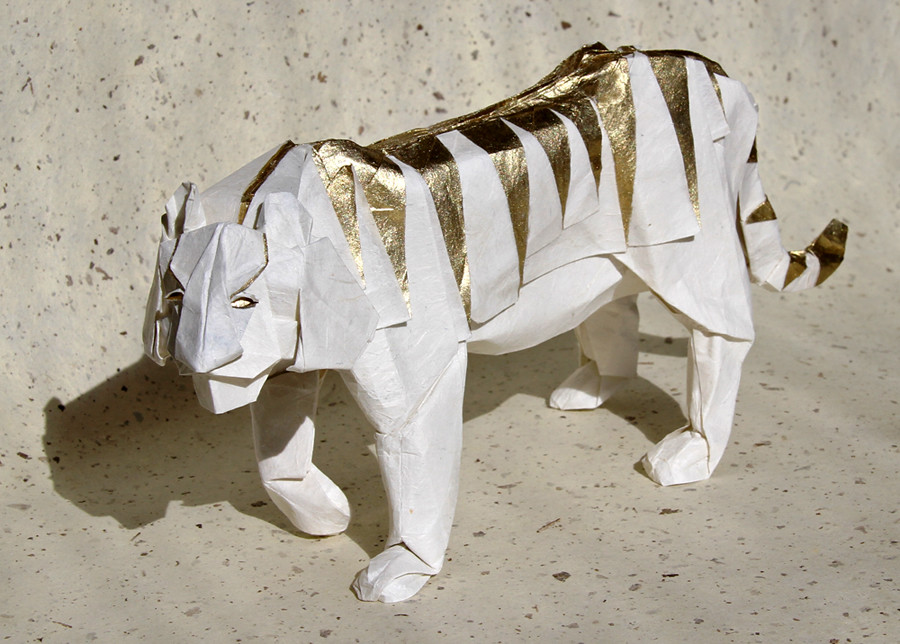

L to R: Tiger (Hideo Komatsu), Bangles (traditional?)
7
Krishna Panyam
Crease Patterns
The crease pattern is what one would see on unfolding a completed model back to the original state, i.e. a series of valley and mountain folds. Some designers publish crease patterns for their designs instead of detailed diagrams, photos or videos. It is not always easy to figure out the folding sequence for a model just by looking at a crease pattern.

Crease Patterns for Crane (traditional), Heptagonal Bowl (Philip Chapman-Bell)
8
Krishna Panyam
Grids
Many Origami designs require a grid to be folded on the paper which makes it easy to find the places where further folds need to be made. Grids are essential to folding tessellations, such as the one seen below.


L to R: Another Bearded Fellow (Joel Cooper) using a triangle grid, Square Weave Tessellation (Eric Gjerde) using a square grid
9
Krishna Panyam
Curved Folds
Folding paper along a curved line rather than a straight line opens up a completely new world of Origami!

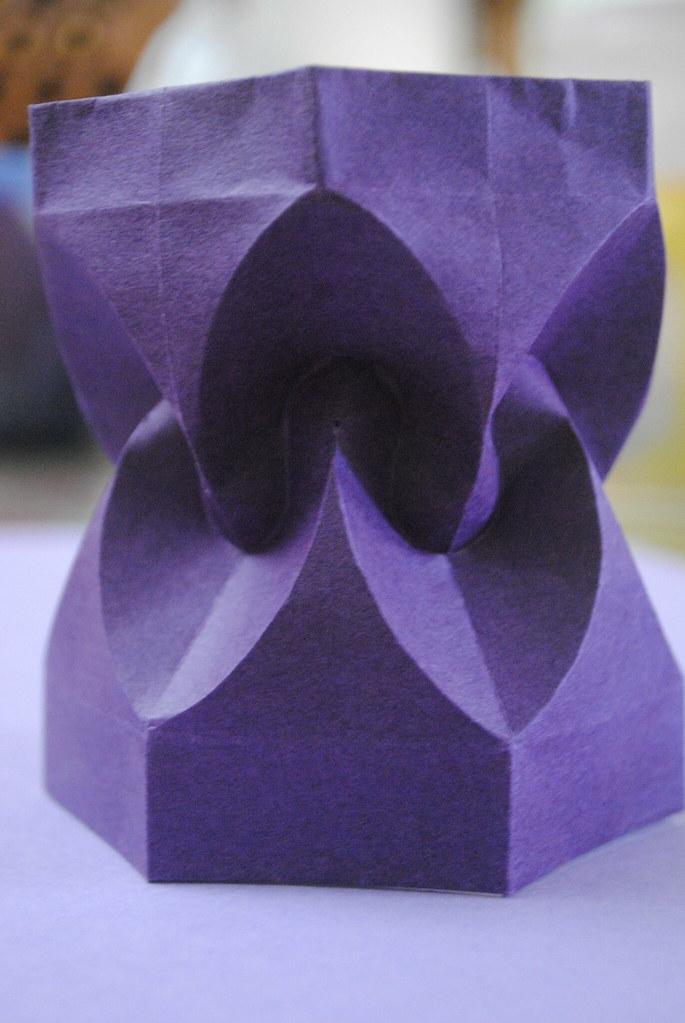
Spherical Origami nº14 (Jun Mitani), Huffman Tower (David Huffman)
10
Krishna Panyam
Dollar Bill Origami, etc.
There are popular specializations within Origami such as models created with US Dollar bills, business cards, paper strips, etc.
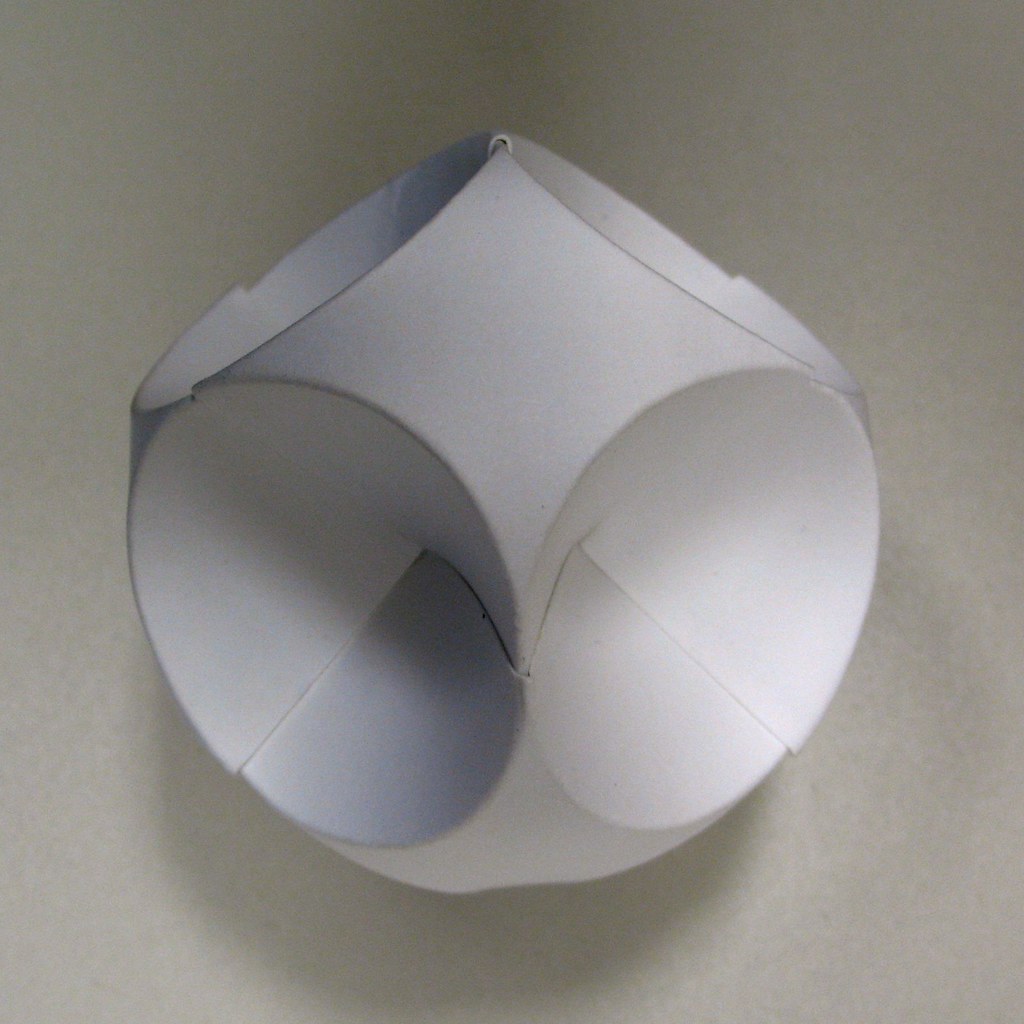

L to R: Models created with Dollar Bills, Orb from 6 business cards, Icosahedron (Heinz Strobl) from strips of TetraPak
11
Krishna Panyam
Wet Folding
By making the paper wet and folding, one can bring elements of sculpture into the art of Origami.

L to R: Wet folded Bull (Emre Ayaroğlu), Akira Yoshizawa
12
Krishna Panyam
The Mathematics of Origami
ABCD is a square. Fold point D to point P, which is the midpoint of AB. It is easy to prove that Q divides BC in 2:1 ratio, R divides AD is 3:5, and Q divides PX (originally CD) in 5:1.
13
Krishna Panyam
But is there more to Origami than just geometry?
Robert Lang: The Math and Magic of Origami, Eric Demaine: The Geometry of Origami
14
Krishna Panyam
Origami Masters
Chris Palmer
Chris Palmer is well known for the amazing flower tower which can be collapsed completely flat (the flower), or popped up into (the tower). The process of folding this model involves decreeping, a technique where creation of each layer is requires all the previous layers to be opened up and refolded!
Chris Palmer's iconic Flower Tower.
15
Krishna Panyam
Robert Lang
www.langorigami.com
Robert Lang is one of the foremost Origami artists and theorists. He has been studying the mathematics of Origami since the 1960's. He is the creator of the TreeMaker software which can be used to compute crease patterns.
The Organist, Stars and Stripes (Robert Lang)

16
Krishna Panyam
Eric Joisel
www.ericjoisel.com
Eric Joisel is a French Origami artist who is very well known for his figurative art such as those seen in the image below, usually created by wet folding.
17
Krishna Panyam
Tomoko Fuse
Tomoko Fuse is a prolific Japanese artist who specializes in modular Origami. She is also the author of a large number of Origami books.
Tomoko Fuse (Spiral Box, Snail and Naval Shell)
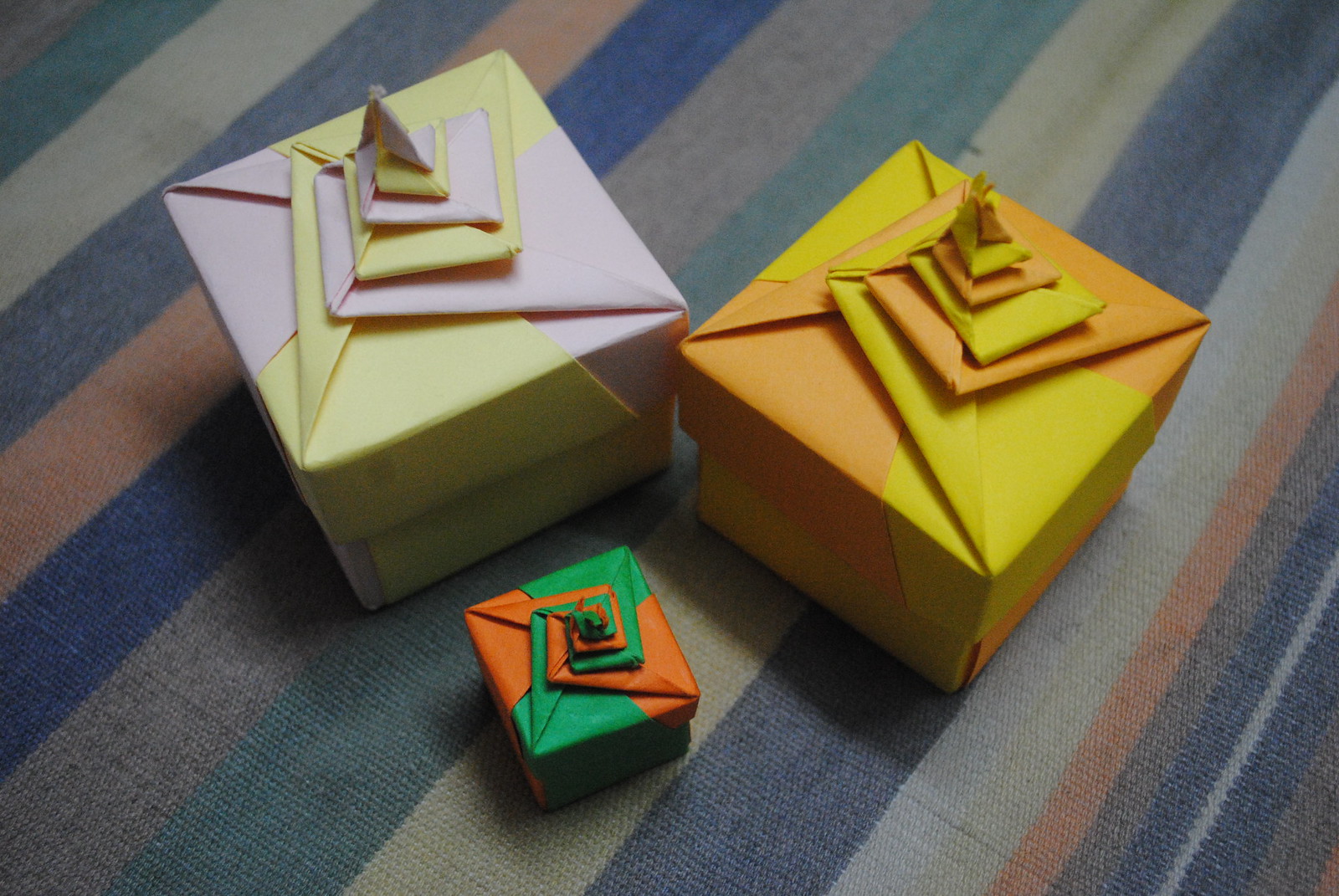

18
Krishna Panyam
And Many Others!
Akira Yoshizawa (1911-2005) is a Japanese Origami master who is credited with the Yoshizawa-Randlett diagramming system, the notation used in modern Origami diagrams. Shuzo Fujimoto is one of the pioneers of the technique of Origami Tessellations, and created many popular models such as the Clover, Hydrangea, etc.


(Peacock) Akira Yoshizawa, (Clover) Fujimoto, and (Bahamut) Satoshi Kamiya.
Ethics
It is generally expected that the designer and the folder of an Origami models are acknowledged whenever a model is displayed.
19
Krishna Panyam
Here is a diagram of how to fold a simple and fun Origami toy - the Banger.
20
Krishna Panyam
Classic Bases
A Base is an abstraction which refers to a specific series of folds which occurs frequently in Origami. Thus, when the instructions talk of folding a waterbomb base with a specific part of the paper, it is a short cut to saying fold a mountain fold and two valley folds.
Waterbomb Base
The image on the left shows the procedure to make a Waterbomb base, which is one of the most common constructions in Origami. The Magic Ball seen below is made by folding a series of waterbomb bases.

L: Waterbomb base, R: The Origami Magic Ball consisting of many waterbomb bases
21
Krishna Panyam
Other Common Bases
The Preliminary Base (aka Square Base) is the dual of the Waterbomb base, and one can switch between these two bases by simply turning the paper inside out.
Bases are usually named after a common model which is derived from the base. Popular bases include Bird Base, Kite Base, Frog Base, etc. Here is a diagram showing how to make a bird base (up to step 11), and to then use the bird base to make the crane.
Folding a Bird base and Crane.
22
Krishna Panyam
Try it out! Masu Box (traditional design)
Now it is time for you to actually try out a very popular and traditional Origami design, the Masu Box and Lid using these video instructions. You need two squares of paper - one for the box and one for the lid. Pictorial instructions are also included, in case you prefer those. Go ahead and try it!
!! Have Fun Folding Paper !!
Jo Nakashima Traditional Origami Frog Diagram
Source: https://raindrops.in/view?id=525506f64251df7e20e1b92d
Belum ada Komentar untuk "Jo Nakashima Traditional Origami Frog Diagram"
Posting Komentar